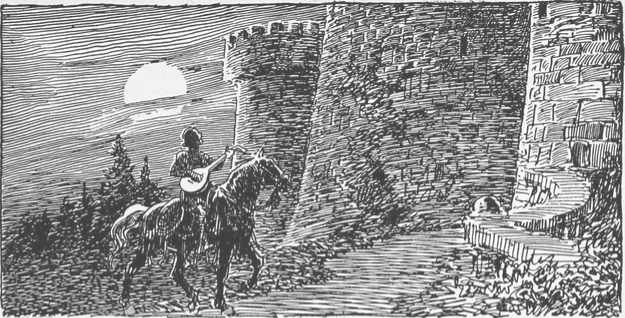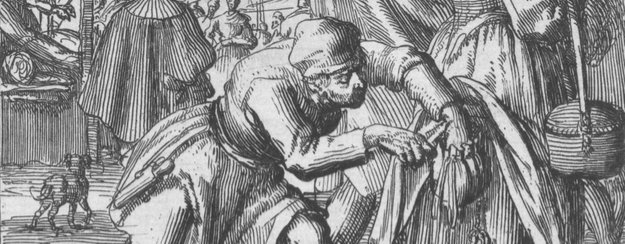
I was reading OSR Grimoire’s recent illuminating post, Cook/Marsh Expert: The Adventure, when I was reminded that there was a post about castles in OD&D languishing in my drafts folder. So without further ado . . .
In order to keep my brain ticking over, I thought I’d have a go at automating the castle occupant generation rules found in the original version of Dungeons & Dragons (OD&D). I’ve been finding it relatively easy to get the type of results that I’m after using Hex Describe, so I used it again for this project.
Castles are a bit of a big deal in OD&D and rightly so. They dominate the surrounding lands for 20 miles (4 hexs) in all directions and levy taxes on the villages within their barony. Adventuring parties that pass nearby will be intercepted by representatives of the castle in the following situations:
- Travelling in same hex as castle: 3 in 6 chance
- Travelling 1 hex away: 2 in 6 chance
- Travelling 2 hexs away: 1 in 6 chance
If so, they could be challenged, taxed or even magically compelled to complete a quest or die! If the party tries to avoid the interception, they may be pursued (if hostile: 3 in 6 chance; if neutral: 1 in 6). It’s likely that adventuring parties will eventually feel the influence of castle occupants in one way or another. The owners fall in to six categories and they can be quite interesting characters. Here’s an example of each:
- This castle belongs to a Lord (level 9) guarded by 3 Giants. There are also 107 men aiding the castle’s defence. Half of these are light foot armed with crossbows, the rest are heavy foot. Also in residence: Magic-user (level 6). They seem neutral.
- This castle is the base of a Wizard (level 11) guarded by 4 Basilisks. There are also 95 men aiding the castle’s defence. At least half of these are light foot armed with crossbows, the others are heavy foot. Also in residence: Apprentice (level 7). They are hostile.
- The castle is owned by an Evil High Priest (level 8) guarded by 13 White Apes. They have an army of 102 men. At least half of these are light foot armed with crossbows, the rest are heavy foot. They are chaotic.
- This castle is inhabited by a Patriarch (level 8) guarded by 4 Superheroes (level 8). 111 men are under their control. Half of these are light foot armed with crossbows, the rest are heavy foot. Also in residence: 1 Assistant (level 4). They are lawful.
- The castle is home to a Necromancer (level 10) guarded by a Gargoyle. Defending the castle are 122 men. Half of these are light foot armed with crossbows, the others are heavy foot. The occupants seem hostile.
- The castle is occupied by a Superhero (level 8) guarded by a Hero (level 4) mounted on a Roc. Their forces include 108 men. Half of these are light foot armed with crossbows, the rest are heavy foot. The occupants seem hostile.
NB For those of you who might not be familiar with some of OD&D’s nomenclature, Patriarchs are level 8 Clerics, and the following are levels of Fighting-Men: Hero (4), Swashbuckler (5), Myrmidon (6), Champion (7), Superhero (8), Lord (9).
I hope you’d agree that such owners would have quite a bearing on the surrounding lands and therefore on any characters that journeyed within their realms.
It’s interesting to note that the castle occupancy rules in D&D B/X Expert Rules are a pale imitation of those in OD&D and only make a passing reference to the flavour that the earlier ruleset effused.
Note that the men listed [a patrol of 12 at most] are only part of the castle owner’s forces. The rest of the force should include men and might even include special creatures such as trolls, or combinations such as superheroes mounted on griffons.
D&D B/X Expert Rules (X59)
Believe it or not, the Rules Cyclopedia is actually slightly blander in this regard.
Note that the men listed [once more a patrol of 12 at most] are only part of the castle owner’s forces and are simply the unit sent out after annoying travelers; the rest of the castle’s forces should include other men and might even include special monsters.
D&D Rules Cyclopedia (p95)
However to its credit, the Rules Cyclopedia does at least feature demihumans as possible castle owners on the Castle Encounter table (p98). But it’s still found incredibly wanting on the topic of castle occupants.
In conclusion, I would recommend reading OD&D, even if you don’t intend to play it. You might be surprised what you find!
I would be remiss for not mentioning Wayne Rossi’s excellent The Original D&D Setting for drawing my attention towards OD&D‘s implicit procedural setting. Go read that too!
FYI Full Metal Plate Mail by Leonaru is a well-presented retroclone of OD&D. If you’re interested in retroclones of this era of D&D its definitely worth a look.





